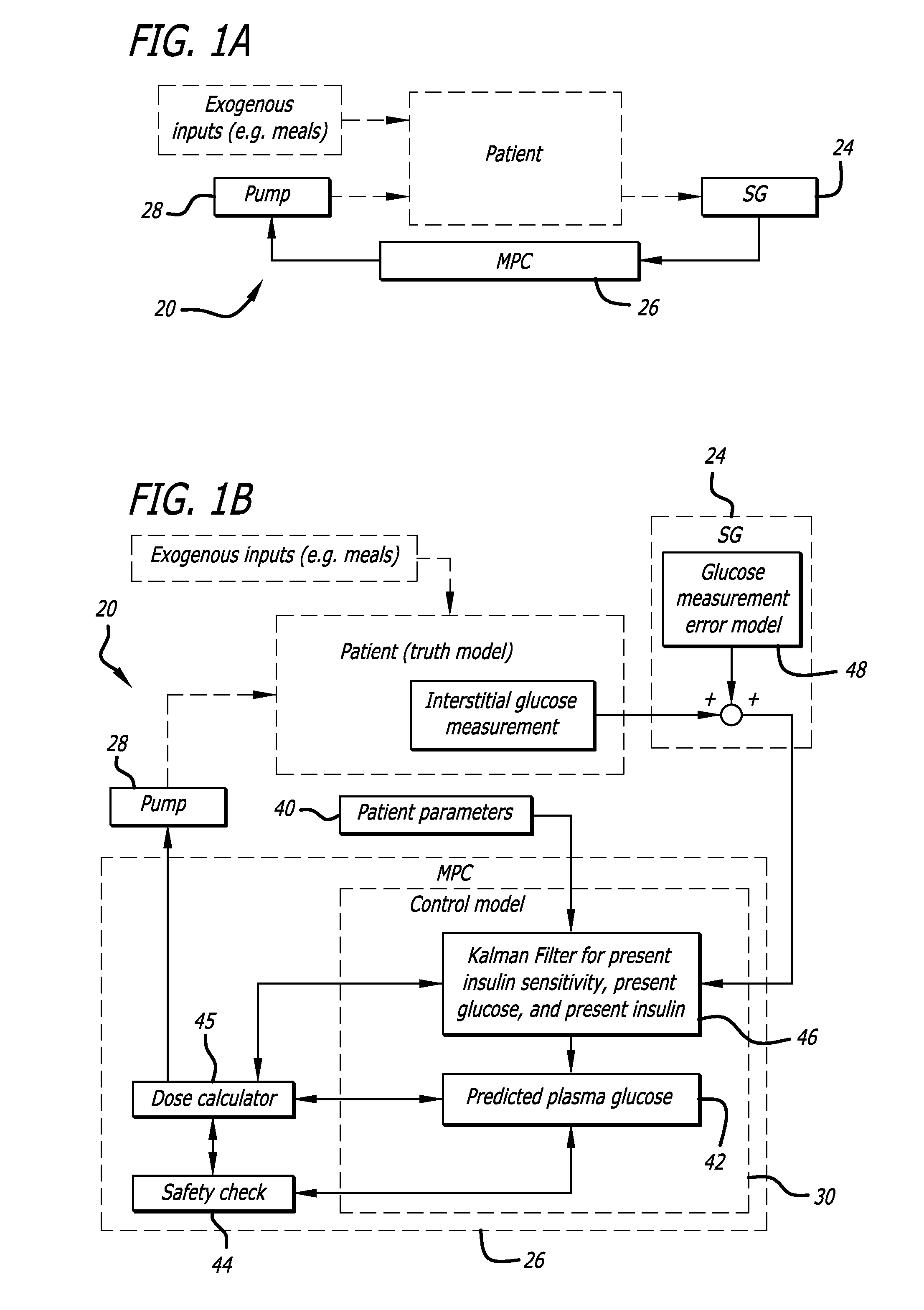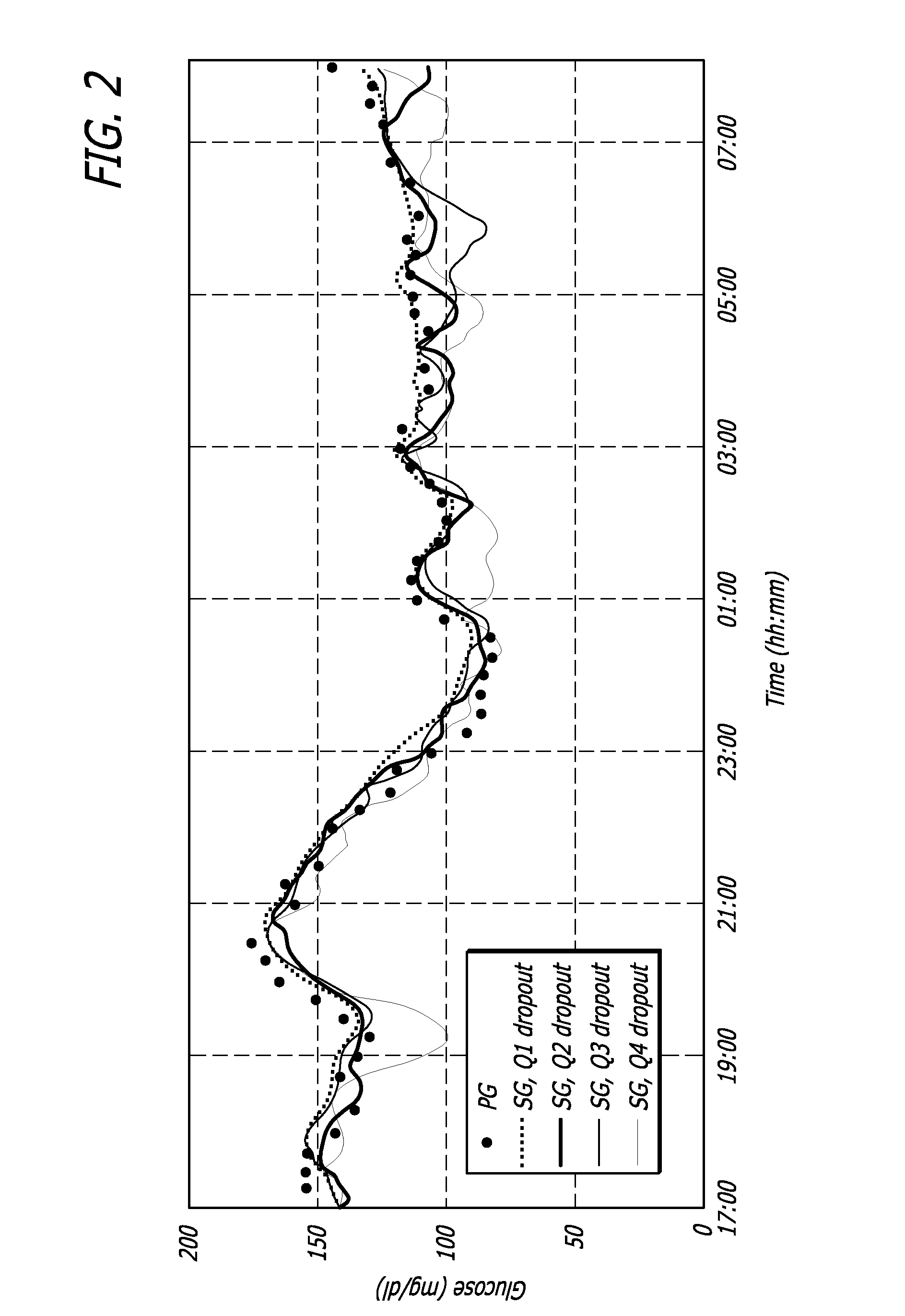Overnight closed-loop insulin delivery with model predictive control and glucose measurement error model
a closed-loop, insulin technology, applied in the direction of diagnostics, medical science, drugs and medications, etc., can solve the problems of inability of patients to adjust insulin delivery, inability of patients to control the glucose level of patients, and inability of the body to properly utilize and metabolize carbohydrates, etc., to achieve the effect of reducing insulin delivery
- Summary
- Abstract
- Description
- Claims
- Application Information
AI Technical Summary
Benefits of technology
Problems solved by technology
Method used
Image
Examples
Embodiment Construction
[0039]Referring now in more detail to the exemplary drawings for purposes of illustrating embodiments of the invention, wherein like reference numerals designate corresponding or like elements among the several views, there is shown in FIG. 1A a basic block diagram of a closed-loop system 20 for continuous glucose monitoring and for continuous subcutaneous insulin infusion using a model predictive controller 26. The patient receives exogenous inputs, such as meals. The patient's glucose is measured 24, evaluated by the model predictive controller (MPC) and is used by the MPC to control a delivery device, such as a pump 28, to deliver medication to the patient to control blood glucose.
[0040]Referring now to FIG. 1B, a control algorithm was used based on the model predictive control (“MPC”) paradigm18 to deliver insulin in a closed-loop fashion. Interstitial glucose measurement occurs and every fifteen minutes, simulated real-time sensor glucose (“SG”) 24 was ...
PUM
 Login to View More
Login to View More Abstract
Description
Claims
Application Information
 Login to View More
Login to View More - R&D
- Intellectual Property
- Life Sciences
- Materials
- Tech Scout
- Unparalleled Data Quality
- Higher Quality Content
- 60% Fewer Hallucinations
Browse by: Latest US Patents, China's latest patents, Technical Efficacy Thesaurus, Application Domain, Technology Topic, Popular Technical Reports.
© 2025 PatSnap. All rights reserved.Legal|Privacy policy|Modern Slavery Act Transparency Statement|Sitemap|About US| Contact US: help@patsnap.com



